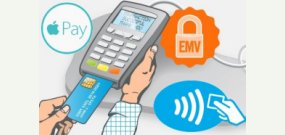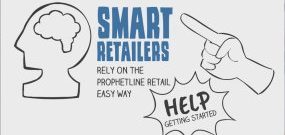– By Jeff Haefner
After helping thousand of retailer businesses select POS/Retail Management Software over the last 12 years, guess what I’ve found to be the most common (and critical mistake) that retailers make when choosing their software?
They don’t spend enough time evaluating the company!
Surprised?
Don’t be. It’s easy to overlook the actual company that will be providing you with service and support.
Most retailers fall into the trap of simply evaluating the actual POS software and considering the price, but they don’t come close to spending enough time evaluating the company.
So why is this so important and what should you be doing about it?
For starters, just recognize that you’re buying a relationship, not just a product. You’ll be in continual contact with your POS software company for software updates, support, training, hardware and consulting.
This is extremely important!
There are thousands of POS software companies, and dozens come and go every year. It’s important to find a company that has been established and has a solid customer base.
In addition, the company’s level of support could be the difference between a good experience and a bad one. When computers are involved, you’re bound to have problems. There’s nothing more frustrating than implementing software and having problems that the software company can’t help you with.
Let me ask you a few questions to help you understand why the company is so important…
- What if the POS software company went out of business? What would you do then? How much money would you have lost?
- What if the company doesn’t give you software updates when you need them?
- What if it takes 2 days to get your technical questions answered?
- What if the software has a bug and they don’t fix it?
- What if they didn’t give you sufficient training? And as a result, your sales reports are showing the wrong totals!
- What if you can’t print receipts and it takes 6 hours to get help from a support technician?
Trust me; it’s not fun to work with a software company that doesn’t have good service.
How to select the right type of company
In order to choose the right company, there are several important questions to ask your self.
Is the POS Software Vendor Financially Stable?
It’s extremely important that the software is supplied by a solid vendor who will be around for many years.
If the software vendor has financial issues, that could affect their ability to deliver new products in a timely manner. In addition, you need a company that will be around a long time.
How can you tell if the company is financially stable? Here are a few items to consider:
- Years in business.
- Profitability.
- Increasing license sales.
- Good credit history.
- High percentage of satisfied customers.
What is the POS software vendor’s vision and future direction?
Every business has a vision and an idea for their future direction. Does that direction include marketing to your industry? Will the company continue to provide software enhancements for your industry?
You should find out the vendor’s vision and future direction. This could tell you whether this company is a good match for you.
Does the POS software vendor provide great customer service?
Many times too much focus is placed on the functionality and technology of a software company and not enough on its character. One of the first things that happen after purchasing POS software is you establish contact with the support staff.
Will the support staff answer your questions in a timely manner?
What are their hours?
Is there a manual or on-line help?
Do they have a service oriented attitude?
Does the company have honorable ethics and character?
Is this a company you will feel comfortable doing business with?
In addition, I would ask the POS software vendor all of the following questions, and then ask some of their references the same questions:
- What hours do you offer telephone support?
- How many technical support people do you have during normal business hours?
- What is the average time for a caller to speak with your technical support people or to receive a call back?
- Do you provide on-site installation assistance?
Jeff Haefner is a nationally known author and retail software consultant. He has past experience as a programmer, business consultant, network administrator, and POS software salesmen. He’s also the author of "The Point of Sale Software Buyers Guide – How to Choose POS Software and Avoid Problemsâ€. You can learn more about his consulting services and software selection tools by visiting: www.possoftwareguide.com





